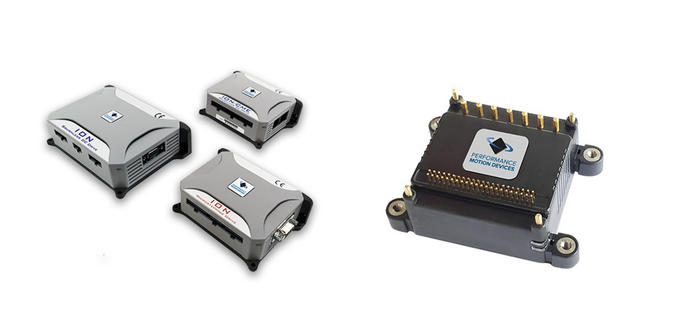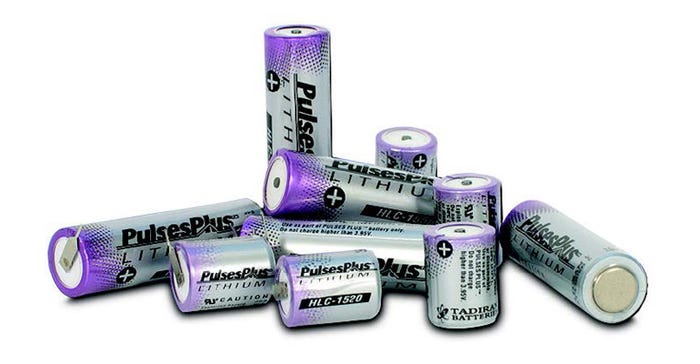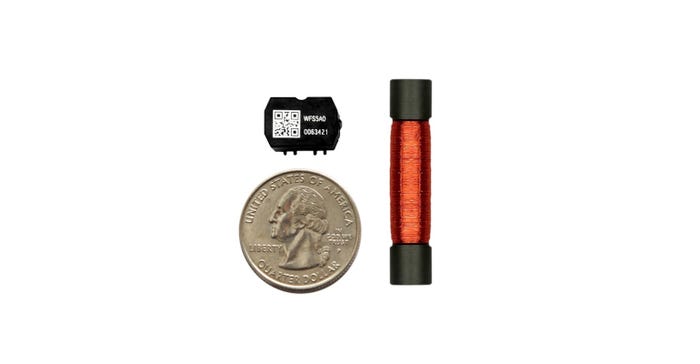The Expanding World of Miniaturization
New features are making a big impact on small components.
December 22, 2022

Contemplating the growing examples of miniaturization throughout the world of product design and production brings to mind the adage, “Form follows function.” In a growing number of cases, shrinking forms are less and less a formidable barrier to improving functions. Some obvious industrial categories that are benefiting most from component miniaturization and weight reduction in motors, gears, actuators, motion controls, sensors, and more are mobile robotics, life sciences (especially where the device may be implanted in or carried by the user), aerospace, military, and transportation markets. The potential impact on humanity is enormous.
What Is the Size Threshold for Miniature?
Peter van Beek, business development manager at maxon (Swiss-based drive system specialists), says for his company, the threshold of miniature is in the 4- to 8-mm-diameter range. “Components used for these diameters are considered miniaturized,” he says. “The manufacturing of parts at these sizes are primarily custom-made as classical machining techniques are not possible.”
According to van Beek, maxon started with 6-mm applications many years ago but initial designs did not fulfill maxon's expectations. “Now, after 15 years of additional design improvements, this same drive assembly has solid torque and speed values. Winding and magnet technologies have improved resulting in more power output.” Multi-pole pairs have also increased torque for this motor.
In short, everything needs to come together in a design to get enough power out of small devices, van Beek adds. Friction needs to be minimized even at speeds up to 100,000 rpm. Gliding partners (two materials) need to be compatible. This could involve surface treatments on steels to improve surface micro structure, use of ceramics, or gem-on-gem interfaces. For dynamic mating parts, maxon analyzes and selects optimal paired materials combined with best hardness and surface roughness.
Procyrion and maxon have worked collaboratively for several years through the development of the Aortix intra-aortic blood pump, which is currently being evaluated in clinical trials. A cardiologist delivers Aortix, which measures only ~6 mm in diameter and 6.5 cm in length, via a catheter introduced into the femoral artery and advanced to the descending thoracic aorta. Once the catheter sheath is retracted, the self-expanding nickel-titanium struts deploy to stabilize the pump inlet in the center of the aorta. Aortix accelerates a portion of the body’s native blood flow within the pump and pushes it through fluid-entrainment ports directed downstream. The device assists in maintaining native aortic flow, transferring energy to the cardiovascular system and thus resting the heart and increasing blood flow to the kidneys and other organs. In a preclinical model of chronic heart failure, Aortix decreased the heart’s required energy use by 39 percent while increasing its output by 14%, potentially allowing the heart to operate more efficiently, and possibly encouraging cardiac rehabilitation and recovery. Under similar conditions, Aortix increased renal artery blood pressure and flow by more than 30%. This benefit can aid in treating heart failure, in which the kidneys play a major role.
The drive that powers Aortix is maxon’s brushless EC 6-mm motor with customized electrical leads, shaft length, and bearings. maxon also designed a biocompatible torpedo shaped housing for the motor. The integrated design of motor, pump, and blood flow through the pump was conceived to allow the pump to operate for long periods in blood. In this design, the motor and impeller pump are magnetically coupled allowing the motor to be mounted inside a hermetically sealed chamber while the impeller pump is in direct contact with the pumped blood. The magnetically coupled pump arrangement is a method sometimes used for giant pumps in the oil field, but because of maxon’s breadth of experience across multiple industries, the company was able to help the Procyrion team successfully transfer this technology to a miniature-scale medical application.

Procyrion has also built a TET (Transcutaneous Energy Transfer or inductive wireless charging) system to allow Aortix to be powered wirelessly across the skin. This design significantly reduces infection risks common with implantable heart pumps. Historically, heart pump devices replaced heart function completely rather than supported it, thus device failure was potentially fatal. With Aortix, a partial support device that doesn’t obstruct native blood flow, failure is not life threatening. The potential ability to benefit patients who currently have few good options with this less invasive approach is what makes Aortix an exciting example of what miniaturization with maxon drive systems can help enable.
Electronics Shrinking Even Faster
“For motors and actuators, I think it's possible to define a threshold that can reasonably be said to be miniature, even though the bar slowly keeps shrinking,” says Chuck Lewin, president and CEO, Performance Motion Devices (PMD). Controls are a bit different because electronics continually shrink in size and at a much more rapid pace than motors, he adds. At the same time, in addition to shrinking, controls are evolving to do more: drive more power, perform more calculations, and interface with more peripherals.
Lewin further shares that a state-of-the-art 500-W motion control drive in the year 2000 would have been considered miniature at 1500 cm3 (90 in.3). “But that same drive would perhaps be considered miniature today at 25 cm3. Such is the staggering progress that has been achieved in IC packaging, CPU speed, and MOSFET switching efficiency.”

Control interfaces are also important to recognize. Cable-connected drives have more or less reached a size-reduction limit owing not to the ability of electronics to shrink, but to the practical consideration of human hands installing cables into the drive and the physical demands of wires and connectors.
The second category of drive is PCB-mounted, and this type is continuing to march downward in size, Lewin adds. These drives mainly use a soldering process and therefore, especially for the non-power connections to sensors and peripherals, can achieve much higher density, tracking typical PCB line widths, which are continually shrinking as well.
Maximum Efficiency, Compact Size
Modern servomotor controllers are integrating such capabilities as sensors and encoders to create efficient, low-mass control functions all in a compact unit. The Puck P3 is a networkable high-performance brushless single-axis motion controller and amplifier with an integrated encoder and precision current sensor. It controls the torque output of brushless servomotors with reliable space-vector commutation and low torque ripple. Users can also command velocity or position or give the controller a target position to reach using its built-in trapezoidal velocity controller.

Barrett Technology, developer of The Puck, is also a supplier of medical-assist robots. Barrett CEO Bill Townsend said, in announcing the Puck P3, "We've actually been in the motor-controller business for 20 years, developing the Puck. But the Puck has been mostly hidden from view as we've been its chief OEM customer until recently. Now we want to share this technology with others as a way to make the biggest impact."
In 2017, Barrett quietly began selling its new P3 to OEM customers and has so far sold more than 1000 P3s in commercial applications (medical, aerospace, entertainment) all working hard under various operating environments across several continents. Barrett Technology understands the value of lightweight, miniaturized, powerful electronics for robotics. Puck-driven robots are in operation in 18 countries across six continents. The Puck reads motor position down to 0.09º and up to 14,000 rpm and controls motor-winding currents with nanosecond timing to apply precise torque, position, velocity, and acceleration at each axis.
Barrett first designed the Puck to improve the torque precision in motors that drive its gear-free robots. It turns out that the same technology that boosted performance also enables extraordinary miniaturization. The latest version, P3, is the size and weight of a penny, nearly one-tenth the size of the smallest brushless-DC servomotor controller available, and it has extreme performance capabilities. It contains a 12-bit absolute encoder, 32-bit processor, and power electronics, adding less length to the motor than a typical encoder alone.
With a volume of only 1.9 cm3 and a total weight of only 4 grams, the Puck P3 replaces a standard motion controller and amplifier. When mounted directly onto the servomotor body, the close proximity of the controller eliminates encoder-to-controller wiring issues such as wire routing, connectors, signal degradation, EMI, I2R power losses, and cable bulk encountered with standard motion-control setups.
Up to 31 P3s may be networked together on a single, easy-to-manage, 4- or (optionally) 5-wire bus, the company says. Two wires are used for robust, high-speed industry-standard CANopen communications. One wire supplies servomotor power, one is a ground, and an optional wire supplies a separate logic power.
The company further notes the P3 controls a wide range of servomotor voltages from 16 to 50 V dc without any reconfiguration. It commands a smooth, continuous torque, even when the input voltage is unstable.
Looking to Miniaturize? Don’t Forget the Batteries
Remote wireless devices are becoming increasingly miniaturized, with industrial-grade lithium batteries playing a central role.
According to Sol Jacobs, vice president and general manager of Tadiran Batteries, lithium batteries pack more energy into smaller footprints, allowing wireless devices to be smaller, lighter, more ergonomic, and less expensive to transport. Lithium chemistries offer the highest specific energy (energy per unit weight), highest energy density (energy per unit volume), and current voltage (OCV) range of 2.7 to 3.6 V, which contributes to product miniaturization. Reducing battery size could be as simple as specifying a higher-voltage cell. The math is simple: as it takes more than two 1.5 V cells to equal one 3.6 V cell, the number of cells could potentially be cut in half.
Prolonged exposure to extreme temperatures can also affect voltage, often requiring the use of oversized batteries to compensate for an expected drop in voltage under pulsed load. Bobbin-type (LiSOCl2) chemistry is an exception, offering the widest possible temperature range (-85°C to 125°C) along with the highest energy density to support product miniaturization.
Another critical factor is the cell’s annual self-discharge rate. Every battery has some amount of self-discharge as chemical reactions occur even when the cell is disconnected or not in use. Self-discharge can be minimized by harnessing the passivation effect, whereby a thin film of lithium chloride (LiCl) forms between the anode and cathode to limit chemical reactions. This passivation layer quickly dissipates whenever a current load is applied. Bobbin-type LiSOCl2 chemistry is uniquely designed to harness the passivation effect and allows certain low-power devices to operate up to 40 years on their original battery.
The cell’s ability to harness the passivation effect varies based on the method of manufacturing. For example, the highest-quality bobbin-type LiSOCl2 cells feature a self-discharge rate of just 0.7% per year, retaining more than 70% of their original capacity after 40 years. By contrast, lower-quality bobbin-type LiSOCl2 batteries can have a self-discharge rate of up to 3% per year, losing as much as 30% of their capacity every 10 years from self-discharge, making 40-year battery life impossible.
IIoT-connected devices require high pulses to power two-way wireless communications. Alkaline batteries deliver high pulses but exhaust up to 8% of their capacity each month due to self-discharge. As a result, more or larger cells are required to offset expected energy losses. Alkaline cells have other limitations, including low voltage (1.5 V); a limited temperature range (0°C to 60°C), making them unsuitable for long-term deployments in remote locations and extreme environments.

To deliver high pulses, standard bobbin-type LiSOCl2 cells can be modified with the addition of a patented hybrid layer capacitor (HLC). The standard bobbin-type LiSOCl2 cell delivers low-level background current in ‘standby’ mode while the HLC delivers periodic pulses of up to 15 A to power wireless communications. The HLC also features a unique end-of-life voltage curve plateau that can be interpreted to generate ‘low battery’ status alerts.
Choosing a consumer-grade battery will reduce your initial purchase price, but the trade-offs can be significant, especially for long-term deployments in remote locations and extreme environments where battery replacement is very costly or impossible. For industrial applications, it often pays to invest a little more for a battery-powered solution that aids in miniaturization while also extending operating life to lower the total cost of ownership.
Or Perhaps No Batteries: Self-Powered Sensors
Sensors are getting smaller, yet still must draw power. How much smaller and more energy efficient can a sensor be when it powers itself? In a recent white paper, Posital and its parent company Fraba BV are undertaking extensive R&D efforts as to its acquisition of Wiegand Effect technology.
The “Wiegand effect” is a physical phenomenon discovered in the 1970s by John Wiegand, an American musician and inventor who became interested in the use of magnetic effects in audio equipment. Wiegand found that when a specially prepared piece of ferromagnetic alloy (“Wiegand wire”) is subject to a reversing external magnetic field, it will retain its magnetic polarity up to a certain point, then suddenly ‘flip’ to the opposite polarity. This change in magnetic polarity, which takes place over a few microseconds, can generate a pulse of current in a copper coil wrapped around the Wiegand wire.
“Wiegand sensors have been a core component of our encoder products for over 15 years,” comments Tobias Best, global head of Positol’s new UBITO startup. “While this technology has provided a highly reliable way of detecting and recording rotations in flow meters and multiturn encoders, we have always been looking forward to its wider potential, especially for energy harvesting.” With this goal in mind, FRABA undertook a development project aimed at improving the energy output from Wiegand devices and demonstrating the possibility of self-powered sensors that could detect events and transmit data wirelessly to an IoT network. The R&D project was conducted by specialists from FRABA and Aachen’s University for Applied Science, with financial support from the German Ministry of Education and Technology. The project team succeeded in producing a new “Wiegand Harvester” – a device that could generate over fifty times more energy than commercial Wiegand sensors. Best continues: “This level of output makes it possible to dream of energy self-sufficient sensors that can communicate data wirelessly over a significant distance.”

The team chose a window sensor system for a practical demonstration of an IoT sensor node powered by Wiegand-harvested energy. Two Wiegand harvesters and their associated electronics were mounted on the window, with three bar magnets mounted on the frame. The harvesters, made up of 21-mm-long pieces of Wiegand wire surrounded by a copper coil, are the size of an AAA battery (d=7.5 mm). Whenever the window is opened or closed, the harvesters pass the magnets, triggering abrupt magnetic polarity changes in the Wiegand wires. The amount of energy delivered is largely independent of how quickly or slowly the window is moved. The team added an ultra-wide-band (UWB) transmitter module that could transmit 134 bytes of data to a receiving station 60 m away.
Forms may indeed continue getting smaller, but functions are growing in power and impact. There will be plenty more over the horizon.
About the Author(s)
You May Also Like



.png?width=300&auto=webp&quality=80&disable=upscale)
